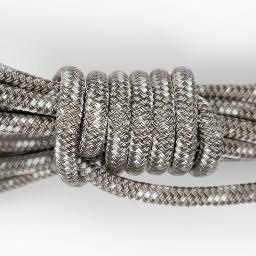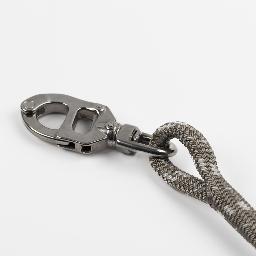Choosing the correct line for your halyard doesn’t just improve performance, it’s essential for keeping your sails safe. Lose a halyard while sailing and you’ll likely have to end your race and head to the loft for repairs, so making sure you use the very best for your halyard rope is a worthwhile investment.
Gone are the days of heavy metal wire halyard rope, with so many advances in rope technology there are a baffling number of options available, from basic polyester double braid to new high-tech materials. (N.B. If you are looking to upgrade from wires? You’ll also need to replace your sheaves with U shaped rope sheaves, instead of traditional V-shaped sheaves).
Top level guide to selecting the right halyard rope
Diameter and Length
The diameter of your halyard rope is determined by 2 factors:
1. The strength of the material in relation to the loads on board
2. Size of your clutches and winches on board
For most gear on a sailing boat, the size is governed by the Safe Working Load (SWL) as specified by the manufacturer. Empirical relations, and rules of thumb can also be used to determine the expected loads so that deck gear can be properly matched.
When choosing a halyard rope, SWL is still a key factor, but with improved strength of modern materials, selecting based on SWL alone will often lead to a line diameter which is less practical for handling i.e. too thin. For example, an 8mm performance halyard may have the required strength for a 40ft boat but if the clutches and winches are setup for 10mm lines it may be worth sticking with a 10mm halyard.
The table below is the starting point we use for a mid-displacement monohulls, to specify lines, but we do then cross reference with the boat type and mast / deck hardware onboard. If you have a very heavy displacement boat or a multihull, line diameters may well increase from these guide figures.
| <24ft | 25-30ft | 31-37ft | 38-46ft | 47-55ft | |
| Main / Genoa Halyard 1:1 | 6-8mm | 8mm | 8-10mm | 10-12mm | 12-14mm |
| Main Halyard 2:1 | 6mm | 6-8mm | 8-10mm | 10-12mm | 12-14mm |
| Spinnaker Halyard 1:1 | 6mm | 6-8mm | 8-10mm | 10-12mm | 12-14mm |
| Code Zero Halyard 2:1 | 6mm | 6-8mm | 8-10mm | 10mm | 12mm |
Halyard rope length can also be easily calculated from basic rig dimensions, check out our Halyard and sheet calculator guide to find yours. Again, these are generic calculators and have safety factors built in (better to be too long than too short!) and you can modify the formulas to suit your own specific deck layout, to get a more accurate fit for your boat.
Material Selection
The right material for your halyard rope depends very much on whether you are a cruiser or performance racer. Halyard lines are generally comprised to two elements, the core and the cover. The core determines the strength and stretch of the line, while a multitude of cover materials and blends provide a whole range of rope properties from softness in the hand to good grip in jammers and clutches.
Halyard Rope Core Material
Most cruisers wouldn’t need to look much further than polyester. An affordable, reliable, soft line that can be easily spliced. For larger boats (above 40-45ft) or more demanding cruising, such as blue water cruising, it's worth considering Dyneema® or other UHMPE cores with much lower stretch..
For larger cruising boats and performance regatta sailors, these UHMPE fibres are a must. Cost effective options include Dyneema® SK78 and Stirotex. For grand prix racing boats Dyneema® SK99 is preferable for its higher working load and negligible stretch.
Cover Material

Again, for cruisers, polyester is a great choice. This is a cost-effective cover which has excellent durability, abrasion resistance that becomes grippier with use. Polyester is still the starting point for Performance cruisers and racers. However, with more demanding and extreme usage, and to adapt the cover for more specific applications, additional high-tech fibres, such as Cordura, Technora, Vectran or Kevlar, that are blended with the Polyester, improve abrasion resistance, grip in clutches and heat resistance on highly loaded winches and so on.
Splicing
Beyond a standard eye splice, many performance boats will opt for stripped and recovered halyard ends. This means a section of the original cover is removed from the rope at the working end and replaced with a thin Dyneema® cover.
The Dyneema® cover is light weight, low friction and super-durable. At the cockpit end, a reeving eye or Flemish eye allows for a quick connection to a mouse line to pull the halyard through the mast.
Hardware

It is always best to splice any hardware into the working end of your halyard. A knot will generally reduce the break strength of your line by up to 50%, whereas a well made splice will hold 100% of the lines working load. Popular options include captive-pin, standard / long D shackles, or 2:1 shackles for a main halyard, or piston snap shackles for a jib / spinnaker halyard.
At Upffront, we are also big advocates of soft solutions, and we recommend to sailors that a soft shackle is a cheap, lightweight, durable solution for the majority of situations.
Halyard Rope Summary
Step 1 - Choose the correct diameter based on existing hardware
Step 2 - Calculate the length required from basic, easily available rig/boat geometry data
Step 3 - Core material choice is driven by boat size, performance parameters and budget!
Step 4 - Cover choice – start with Polyester but then add exotics to deal with specific / known issues like abrasion or slipping in clutches
Step 5 - Select your hardware
That’s all the information you need to get started in upgrading your halyards. Why not check out our running rigging help page linked below, with links to calculators, information and a guide to help you select the best options for you!
If you have any questions about halyard rope, please feel free to email us at [email protected], or click the link below to see our full range:


Get a grip! What’s the right halyard rope for my sailing boat?